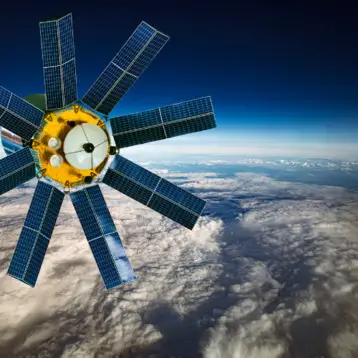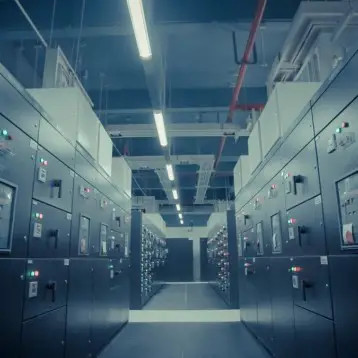Since first entering the consumer market about two years ago solid state drives (SSDs) have improved significantly, and while prices remain substantially higher than conventional magnetic storage, it is predicted that in 2009 SSDs will finally make an impact on both the consumer and business markets.
 |
| Samsung’s first commercial consumer SSD |
|
Dr. Fujio Masuoka from Toshiba invented the first flash memory in 1984. When Intel introduced it as a commercial product four years later, the flash market grew by several orders of magnitude. In the late 1980s, the Israeli company Msystems (now part of Sandisk) started selling flash storage solutions for the military and aerospace industries (the lack of moving parts made them ideal for ruggedized systems). At the time 1MB of flash cost thousands of dollars. Almost 20 years later, the same revolution is reaching the consumer and business markets with a new generation of SSDs which outperform even the fastest magnetic based drives in both read, write and of course latency.
In early 2007, when Samsung introduced its
first generation SSD into the market it had a capacity of 32GB, sequential read/write speeds of 57 MB/s and 32 MB/s respectively and a hefty price tag of around $1000. In the ensuing two years, the read and write speeds of the top of the line drives increased more than fourfold while capacities grew from 32GB to 160GB and more recently to 256GB. Prices, however, remained the weak point of solid state drives so far, and while Multi-level cell technology (MLC) is able to bring relatively lower-end parts’ prices down (as of late November 2008, 64GB MLC parts could be found for under $200), higher end Single-level cell (SLC) parts can easily reach over $500 for a mere 32GB.
 |
Intel’s SSD – blazing fast,
but expensive (Credit: Intel) |
|
Currently there are several main differences between SLC and MLC based drives. SLC, which has been used for defense and industrial applications since the early days of solid state drive technology, has an inherently better endurance (more read/write cycles) than MLC. SLC is also typically faster, especially when it comes to sequential write speeds (although read speeds are also typically lower for many low-end parts). On the other hand, MLC has higher density and significantly lower cost per Gigabyte.
The rules of the SSD market have started to change with the recent introduction of a series of solid state drives developed by a new and powerful player – Intel (along with Micron). The Intel X25-M SSD has been promoted by Intel as the fastest SSD drive in the world, and although there might be faster “industrial” level SLC drives already on the market, Intel is surely one of the fastest MLC drives, boosting performance to a whooping 250MB/s read speed and 70MB/s write speed). Intel also claims to have improved the reliability of its MLC drives to a level in which a user can write 100GB of data on the drive each day for 5 years. On a more realistic average user scenario a 10 year life span should be expected. More demanding uses (servers etc.) could still strain the technology and for that reason Intel also introduced a different SLC based drive called X25-E Extreme which is more suitable for enterprise applications (providing 250MB/s read speed and 170MB/s write speed) and at least twice the endurance.
Despite the revolutionary nature of Intel’s new MLC line, pricing still remains the Achilles heel of the SSD market. An 80GB Intel X25-M costs just under $600 – about 30 (!) times the price of a similar sized conventional hard drive. The new Intel X25-E Extreme with only 32GB costs over $700 (due to its SLC technology), making enterprise adoption rate low and slow.
 |
Samsung upcoming 256GB SSD
(Credit: Samsung) |
|
However, Intel is far from being the only player in the advanced SSD market. Samsung, which released the first consumer SSD in 2007, has also significantly improved its products in the past two years. Back in May 2008, Samsung announced plans to release an ultra fast MLC based SSD, boasting an exceptionally large 256GB capacity. In November 2008 Samsung made good on its promise and announced that the new drives have entered mass production and should be expected on the market soon. The new drive will boast a read speed of 220 MB/s and an exceptional write speed of 200 MB/s. Like Intel’s SSD, the price is going to be the determining factor. Although as of late November 2008 Samsung had not yet released specific prices, estimates are that these will reach at least $1000.
Other players in the ever expanding SSD game include Toshiba, which also recently announced a 256GB MLC drive but with about half the read/write performance of the upcoming Samsung model, and Sandisk (which was almost acquired by Samsung earlier in 2008). Sandisk recently announced a new SSD related technology known as Extreme Flash File System (
ExtremeFFS). According to Sandisk, this technology has the potential to greatly extend endurance and accelerate SSD random write speeds by as much as 100 times compared with existing systems. The ExtremeFFS can optimize a Vista OS to make a much more efficient use of a Sandisk drive and it can even learn user patterns in order to store data used with higher frequency in more accessible locations on the drive.
Some of the strongest players in the enterprise SSD market are relatively unknown to the general public. These companies include names such as Memoright, Mtron, STEC, BiTMICRO Networks and Adtron (among others). Most of them specialize in manufacturing high end SLC disks for industrial and enterprise applications. Mtron, for example, recently announced it will reveal a new SLC based SSD drive in 2009 with an unprecedented 260MB/s read and 240MB/s write speeds. However given the company’s current generation SSD pricing of around $900 for 64GB drive, the new super fast drives will probably find limited costumer share even on the enterprise market.
 |
| OCZ new VERTEX SSD series (Credit: OCZ) |
|
So what are we going to see in 2009 in the SSD market? Setting aside game-changing technologies such as Sandisk’s ExtremeFFS we believe the market will be divided into 3 main segments. High-end industrial/enterprise SLC based drives with $1000 and higher price tags. These more “traditional” SSDs will gradually lose their appeal as more cost effective high-end MLC drives will reach the market. These new drives which include Intel’s X25-M series (with a 160GB and even larger capacity versions planned for 2009) and Samsung’s upcoming ultra fast MLC drive (with a 512GB version planned for 2009) will represent a more viable option probably around the second half of 2009 (given the predicted drop in flash prices for this time period).
The third and last segment will be the entry-level consumer MLC based SSD market. As of late 2008, several companies including OCZ, G.SKILL, Patriot and others are offering relatively cheap ($300-$400 for 128GB drives) SSDs with better performance than most high-end conventional hard drives (above 150MB/s read and close to 100MB/s write). The attractiveness of such drives should increase considerably when prices go down below $200 for 128GB.
Both the high-end consumer segment and the enterprise SSD market have already stretched the capabilities of the existing SATA II technology to its limits. With the X25-E Extreme capable of 250MB/s read and 170MB/s write and the new Samsung with 220 MB/s read and 200 MB/s write, not to mention the upcoming Mtron with 260MB/s read and 240MB/s write – the upper limit of 300MB/s of the existing SATA II doesn’t look that far off any more. In order to allow for even faster drives a new SATA standard is currently in the works. The new standard, SATA 6Gb/s, will be backwards compatible and allow for up to twice the bandwidth – 600MB/s. However, given the rate in which the SSD market has been progressing, it might be wise to wonder if an even higher bandwidth should have been selected.
Another possibility could be to abandon the SATA connection altogether and move to an all USB interface for hard drives. With the USB 3.0 specifications now finalized, the next USB standard will have a similar bandwidth as the next generation SATA (i.e. 600MB/s) but it will have two important advantages – it can also deliver power (and SSDs typically consume relatively low power) and it is (or will be) a much more prevalentstandard. This means it will be cheaper to implement and more mobile (you can easily take your flash drive with you anywhere you go and still get blazing fast performance).
TFOT recently covered
Toshiba’s new SSD as well as an innovative new technology developed by Fusion-io called
ioSAN, which is the world’s first networked enterprise Solid-State Drive (SSD) capable of providing over 700MB/s read and 600MB/s write speed (using PCI-E X4 instead of SATA II). TFOT also recently covered the upcoming
USB 3.0 standard as it makes its last steps towards approval.














